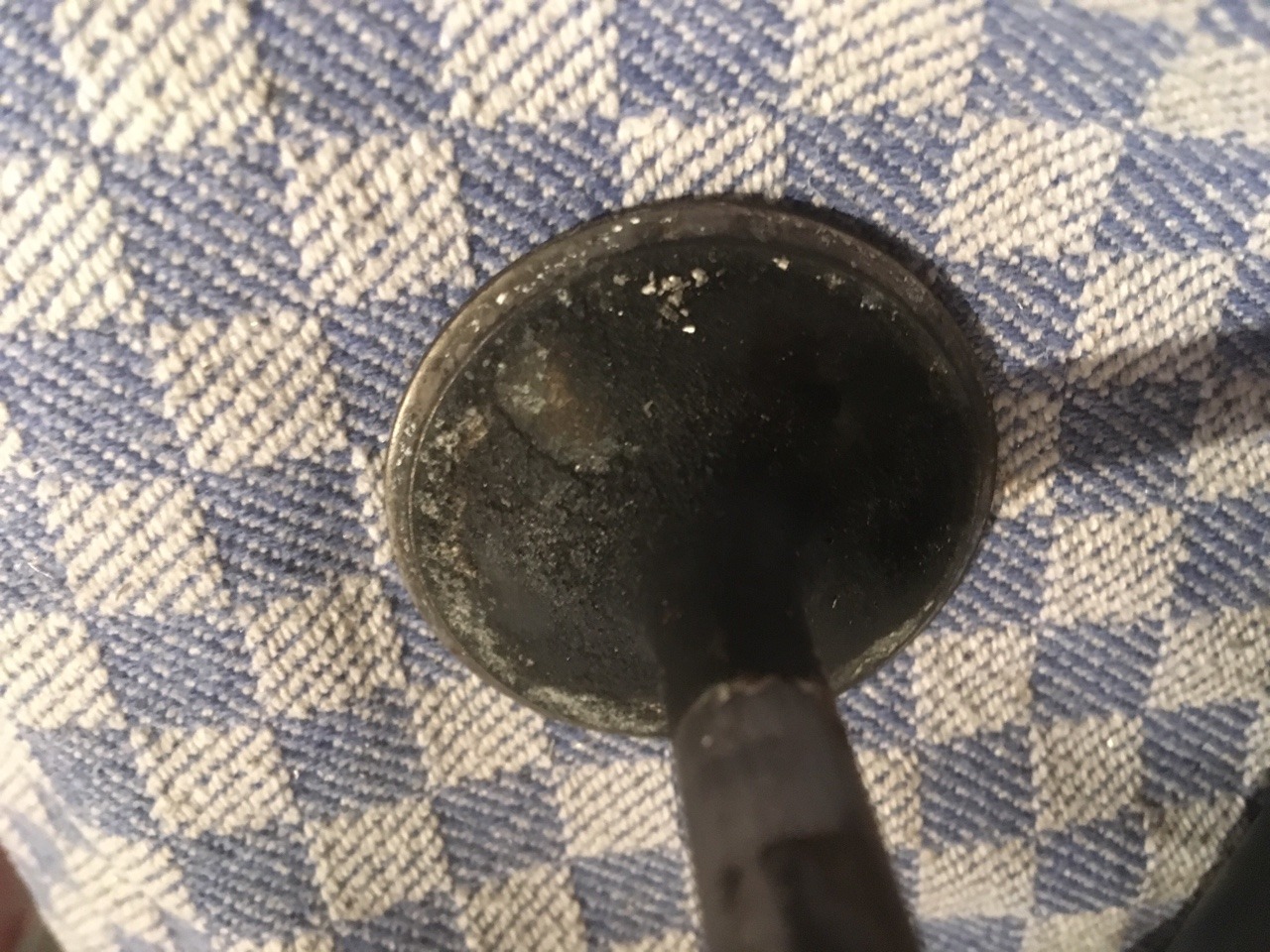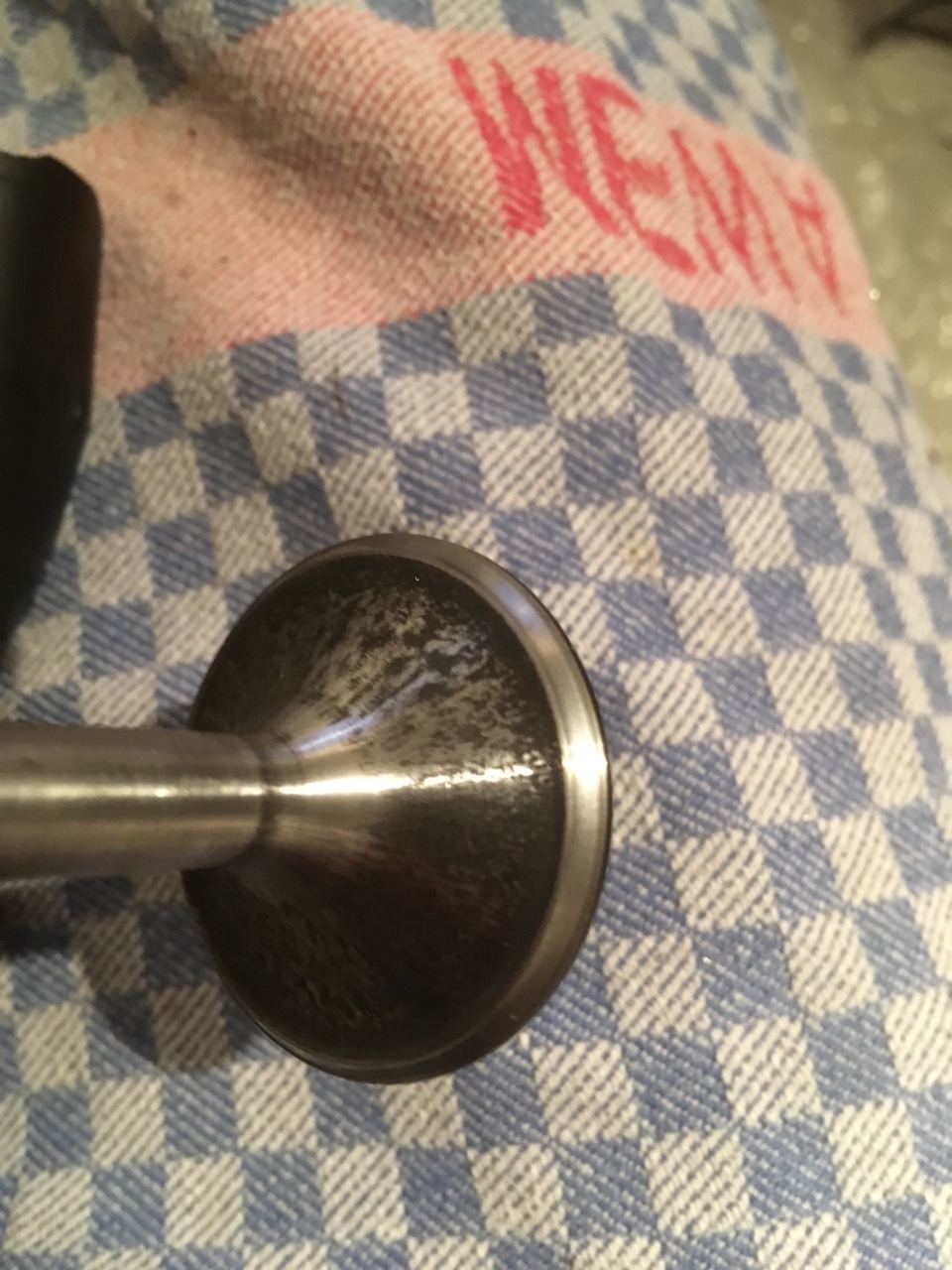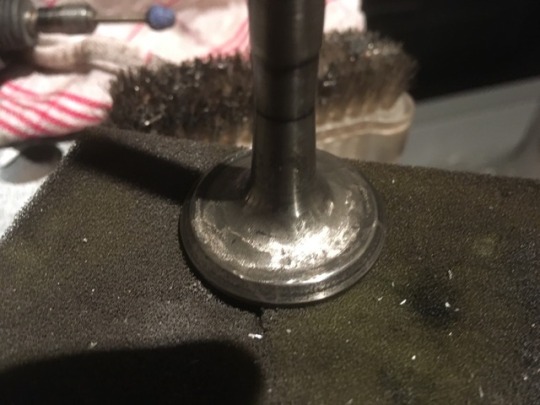Maniacmechanic1
solid fixture here in the forum
The Carbon buildup on the backside of the valves I remove with a wirebrush wheel on a bench grinder. Wear safety glasses.
I used steel wool and drill on the backside of the valves. The valves rotated in the drill and holding it in one hand, in the other hand was the steel wool.The Carbon buildup on the backside of the valves I remove with a wirebrush wheel on a bench grinder. Wear safety glasses.
For the kind of vehicle you are restoring and the goals you have, that sounds like a great way to getI used steel wool and drill on the backside of the valves. The valves rotated in the drill and holding it in one hand, in the other hand was the steel wool.

For the kind of vehicle you are restoring and the goals you have, that sounds like a great way to get
the job done. That's assuming I understand your goals for this vehicle.
I did something very similar for my exhaust valves. I wanted to radius the margin, so I put them in a
drill and used that against the grinder with a Unitized Wheel.
View attachment 11228
I Would not get too Crazy doing race port work and Full Radius valvejob on the Buick V8 300.I want to do the margin thing to the valves too. Thats my next step.
Another thing is, on the top of Valve is a GM marking that is highlighted. It is better to grind it away? So I have a smooth surface.
Would make it sense to change the shape of the stock valves?
Removing the GM marking would be marginally helpful with carbon accumulation.Another thing is, on the top of Valve is a GM marking that is highlighted. It is better to grind it away? So I have a smooth surface.
Would make it sense to change the shape of the stock valves?

Here you can see the markings on the valves



Before cleaning

After ckeaning

For the shape, I looked at my SBC Manley valves and thought to make the valves a bit thinner
Not sure where you are talking about making the valve thinner, but it doesn't sound like a good idea. It willFor the shape, I looked at my SBC Manley valves and thought to make the valves a bit thinner


Thats right, it is a fun drive. But I want to test and learn some things on a not so expensive part like the Buick 300. If the 300 fails we can put the spare engine in or go with a Rover V8 I can get from a friend.
I did this now to the valves. I only removed the marks and smoothed it with sandpaper in the end.
